My attraction for water is visceral. There’s no better way to describe it.
When underwater I feel calm and energised at the same time, as if endorphins and adrenaline start working simultaneously leading to a status that is both alert and seraphic.
In the Galapagos I had probably the best underwater experience of my entire life.
As far as most of the beaches in the Galapagos are accessible free of charge, if you really want to have the best snorkel, you have to give in to a tour. Which was, of course, an exception to our low budget plans. An average 1 day boat tour to one of the smallest islands of the archipelago costs easily more than 100 dollars. However, we soon found out that every dollar was 100% worth it.
We picked Pinzon, a small volcanic island, home to an incredible variety of bizarre birds, about 1 hour motor boat ride away from Santa Cruz.
Our first stop: shallow waters. Didn’t even have time to get used to how crystalline the light blue water was that the show started: sharks, sea turtles, fishes of every sorts, a family of sea lions, including a nosey baby hunting for his morning meal, and iguanas (didn’t even know they could swim!). I couldn’t really decide what to focus on since every single creature seemed to be trying to steal the spotlight. One of the sea lions did that for me and started playing chase. Feeling its skin skimming over mine and looking right into its curious eyes at a few cm distance? It was too beautiful to be true, as if that sea lion was nothing but a big golden retriever pup.
Second stop: deep cobalt blue waters, with their multi-coloured corals, shoals of fishes and sharks and their strong hot and cold currents. There I really wished I owned a diving certification (why didn’t I get one while in Thailand?). I just couldn’t stop thinking about the marvels that were hiding few metres away from us.
As soon as we got back on the boat for lunch a joyful multitude of dolphins decided to pay us a visit and put on the umpteenth show of the day. That was right before we got taken to a solitary pristine beach with white sand and turquoise waters, where we spent a good hour swimming with sea turtles and sunbathing next to pelicans and shiny red crabs.
Daphne Major island’s riff served as our third snorkelling spot. Intentionally our guide forgot to mention until the end of the day the scary encounter he had, in the same exact place, just a few weeks before, with a 4 metre long tiger shark. Apparently the big fish showed up, most likely attracted by the sea lions-like silhouettes of the snorkelers, right at the side of one of a fellow tourist and got pushed away by a GoPro stick. Guess they were lucky, since this very specific shark can get easily aggressive. I imagined myself losing my s### in the same situation. Ignorance is bliss! Daphne Major also served as a great bird watching spot: from the comfort of our seats we could admire nesting families of frigates, blue footed boobies, red footed boobies, Nazca boobies and lava gulls.
After a quick dip in a cave that was crawling with inoffensive sharks and attention seeking sea lions, overjoyed, we made our way back to Puerto Ayora and spent few hours hunting for a boat ticket to reach San Cristobal the morning after. We got ours only because, by chance, after many unsuccessful attempts at various tickets booths, we bumped into the wife of one of the captains, and pretty much begged her to find two tickets for us. Which she Kindly did after a few calls.
Another early bird awakening and a not so comfortable motor boat ride (I wonder how many other tickets got sold after the lady made the infamous calls…), we reached Puerto Baquerizo Moreno, San Cristobal’s island main village, and immediately came to terms with its promenade, utterly filled with families of lazy and smelly sea lions. After wishfully checking the prices of an incredibly pretty accommodation and realising that it was at least 10 times over our budget, we went straight to the place we got recommended by fellow backpackers: Hostal San Francisco, easily one of the most run-down places we slept in. As if its squalor wasn’t bad enough, our room literally smelled like s###. Little the owner could do to help us, apart from giving us a flower scented spray and wishing us good luck.
We soon left the discouragement behind and ventured the island, which, surprisingly, seemed to be not so touristic. At the Interpretation centre, apart from getting a complete overview of the Galapagos’ history and Darwin’s evolution theory, we finally put 2 and 2 together and realised why the costs to reach the archipelago are so prohibitive. Selecting a smart kind of tourism, based on motivated people, mostly animals/science lovers who respect the islands and their treasures, is the only way its inhabitants have to preserve everything as it is. We somehow felt even more blessed to be there.
Taking advantage of a not so sunny sky and a relatively fresh weather, we decided to go for a hike towards the secluded Playa Baquerite, on the western coast of the island. Of course, we didn’t realise how long it would have taken us, or how inappropriate our flip-flops were on such an unusual path. Rather than walking we actually hopped from one crooked lava rock to the other for what it felt like an eternity, and eventually, after several sprains and curses, made it to our destination. There we found a spot, in between sunbathing lava iguanas, under a mangrove tree. The ocean was kinda rough and the seabed mainly consisted of sharp lava rocks. Two conditions that kept Isa far away from the water, but really didn’t affect my will to snorkel with sea turtles.
On our way back to Las Tijeretas, a popular snorkelling cove, characterised by shallow clear waters and playful sea lions, the sun popped through the clouds and frigates started invading the sky. We took a quick dip there, but soon moved further through a maze-like pathway in the middle of a cacti forest, heading towards Playa Punta Carola, right in time for another snorkel with sea turtles and a striking golden sun set behind its strategically located lighthouse.
That night in Puerto Baquerizo Moreno we somehow struggled to find a cheap meal, since the presidential elections were on, and most of the kiosks were closed. Eventually we spotted a joint for locals and had some great pollo asado.
There’s something totally unique about San Cristobal: its ubiquitous sea lions. When you start to get used to their presence, the night comes, and their number seems to be growing bigger and bigger. Their smell gets stronger and stronger. Their noises louder and louder. Till the point when you actually start wondering if there’s really a limit to it. I’m talking about thousands of animals on top of each other, creating a wobbly brown carpet. They are so many that they start to invade the villages’s streets, squares and playgrounds. The cachophonic noise they emanate could easily come from another world: something in between a crying baby, a goat’s bleating and the creepy sound of a walking dead. That’s the “lullaby” we fell asleep with.
The following day we woke up very early and, quite happily, left our stinky room behind to have a traditional breakfast based on plantain balls, eggs, melon juice and Galapagos coffee at Mary’s Cake and Coffee, while the whole village was still asleep. We walked for about one hour on a shadeless solitary road towards the eastern coast of the island. Destination: La Loberia. As the name points out (lobo de mar is Spanish for sea lion), this wilder beach gives home to several sea lions colonies. We got there quite early and decided to hike further north to a not so far away cliff, famous for its winged inhabitants. The path was not as tricky as the previous day’s one, but, since we never learn, we were still wearing our stupid Havaianas. When we finally arrived, we carefully stuck out of the cliff to see exactly what we were looking for: blue footed boobies. I almost killed myself trying to take a good picture of the emblematic bird and really wished I had a zoom with me.
Spending the day at La Loberia was actually the highlight of the time we spent in San Cristobal. We soon found out the sea lion’s colony was actually mostly made of pups. Goofy and whining when outside of the water, playful, nimble and curious when underwater. Isa was snorkelling in shallow waters when a pup started chasing her. Aware of the warning we got given never to touch a sea lion pup, she clumsily swam away, while the pup was tickling her feet with its whiskers. As soon as that happened she turned towards him and the pup jumped out of the water to splash her in the face with its front flippers, making the few folks on the beach laughing in unison.
Another memorable moment happened when, while snorkelling, we suddenly came across a placid huge sea turtle. I dove next to it to understand, in comparison to my body, how big it was. Isa, who floated on the surface, claimed its head was bigger than mine, and its body longer. I’m 177 cm.
When our skin started to get a bit too red, we made our way back to Puerto Baquerizo Moreno on a burning asphalt. In town, we stopped by a local’s panaderia (bakery) and picked some traditional cakes. An old man actually bought us some, saying that we really couldn’t miss those too. We both felt moved by such a simple yet unselfish gesture.
The day ended with another jaw dropping sunset, followed by a ceviche feast, and the last unforgettable stroll on the surreal screaming sea lions filled promenade of Puerto Baquerizo Moreno.
Olympus OM-1, Agfa Scala 200 (35, expired) / Lomochrome Purple 100-400 (35)
Canon EOS 300, Fuji Pro 200 (35)
18-19-20/01/2017, Pinzon – San Cristobal (Galapagos islands, Ecuador)

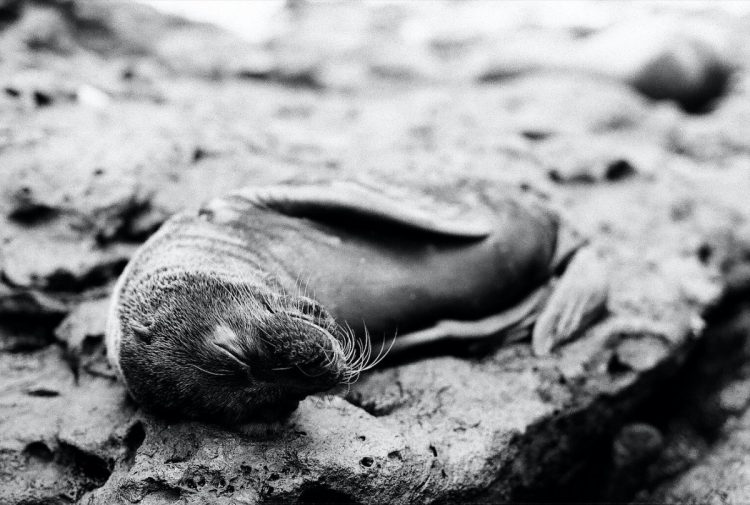

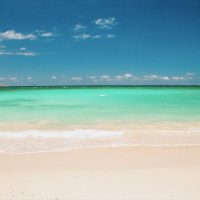
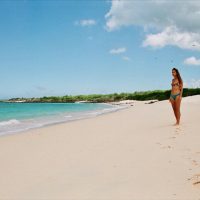
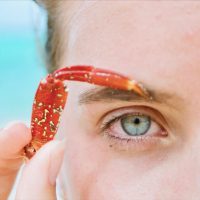
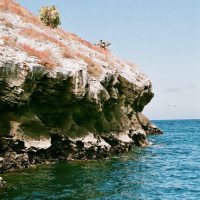
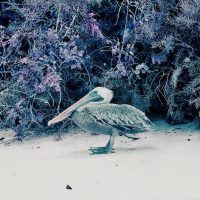

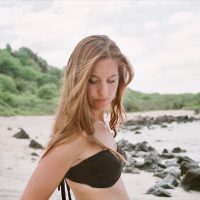

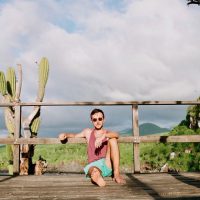

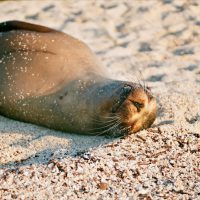
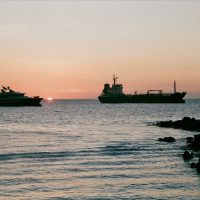
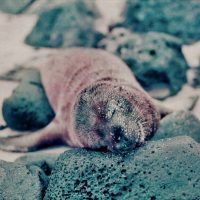




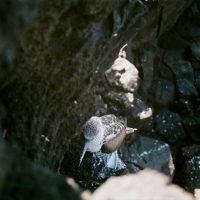

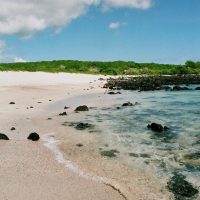

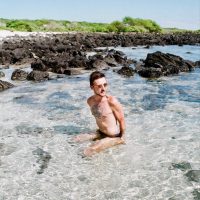
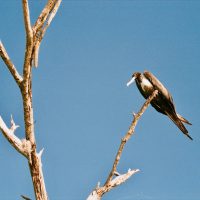
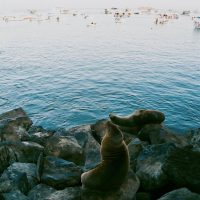


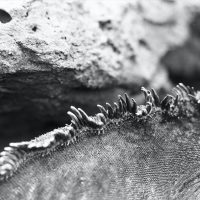
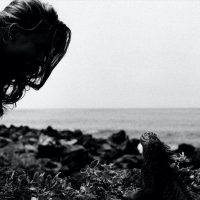
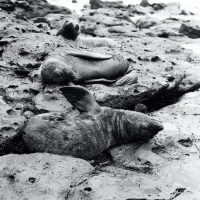
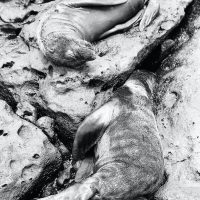

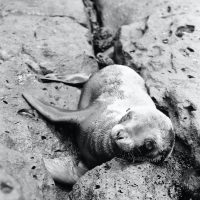
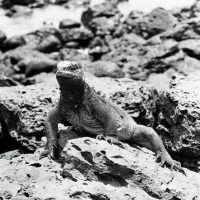



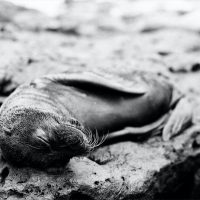


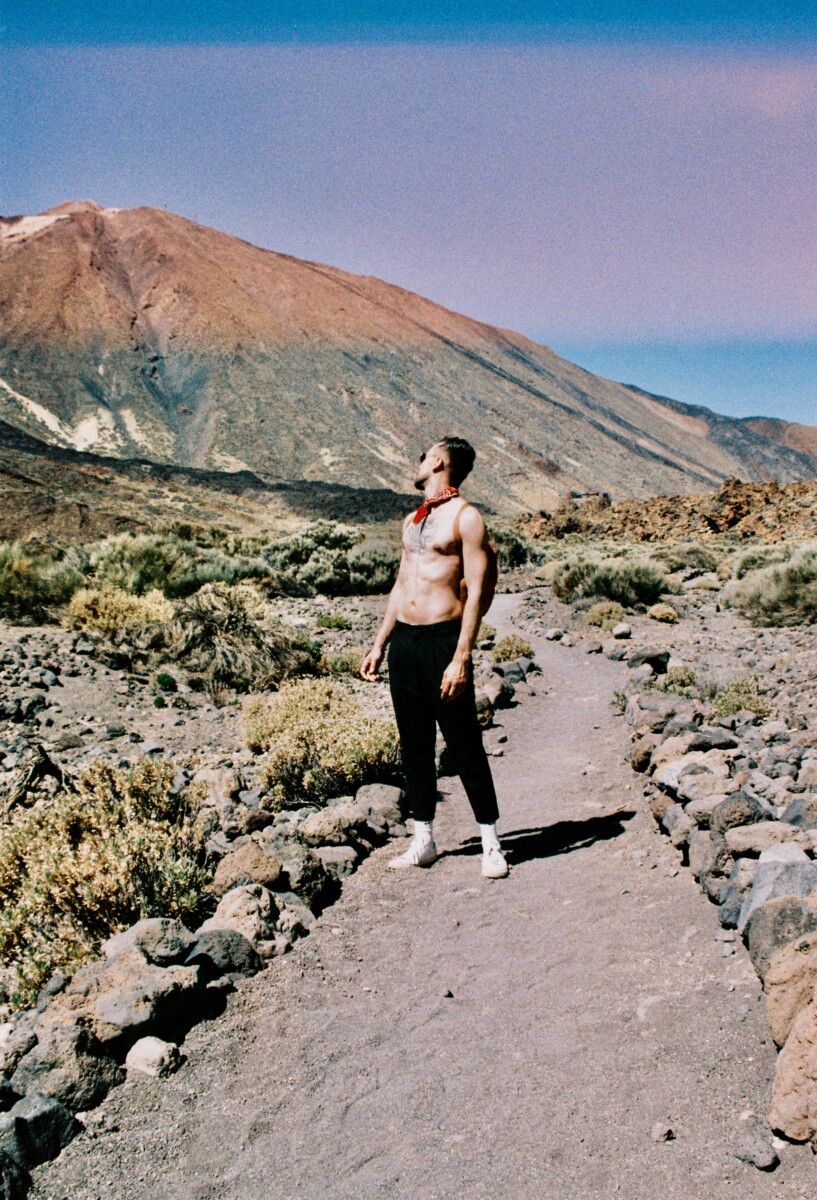
Leave a Reply